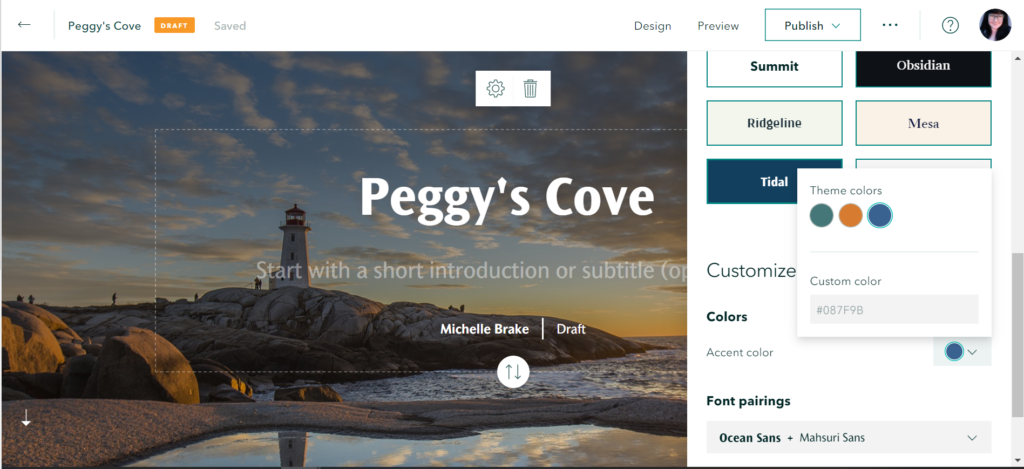Stories are powerful; they can advocate for change, influence opinion, and create awareness. ArcGIS StoryMaps are web-based applications that allow you to tell your story by integrating maps, data, pictures, videos, and other media in one place. StoryMaps are my favorite ArcGIS product due to their versatility and ability to augment storytelling through the addition of digital content.
What is your story?
When approaching a StoryMap it is important to know what story you are trying to tell, the audience for your story, and the overall purpose of the StoryMap. Are you looking to inspire others? Are you looking to inform people about a topic or issue? Are you looking to engage viewers with a call to action? By defining the story, audience, and purpose at the start, you’ll be able to have a better overall flow with your StoryMap.
StoryMaps are linear, so it is important to identify the beginning, middle, and end of your story. Plan out how the story will be told, what media will be used, and the maps you’ll include. The overall flow of your StoryMap should be logical and easy to follow for viewers.
Start your story with a title and image that grab your viewer’s attention and let them know the message of your StoryMap. The image should complement the message or theme of your StoryMap while enticing viewers to scroll down and see more.

When it comes to ending your story, you need to give your readers something to do. End your StoryMap with a call to action – this can be signing up to volunteer, resources to learn more, or contact information to engage further. Having this information available with the StoryMap allows your readers the opportunity to continue the story beyond the StoryMap.
Focus: Story or Map?
When approaching a StoryMap I always ask myself, am I using maps to support my story or a story to support my maps? This allows me to better frame the overall content, flow, and layout of my StoryMap with the answer in mind. If my maps are supporting my story, I typically start by laying out the story with room to include the maps. If the story is supporting my maps, I start by building my maps, so I can better frame the story around them.
Any maps being used should be built with the purpose of being included in a StoryMap to ensure that the message you are looking to get across is clear. The maps should be simple and easy to understand, take into account the layers included in the map, symbology, pop-ups, and labeling. Make sure that the layers in your map elevate information that supports your story.
The examples below highlight ways that maps and other media can support the story being told. Each showcases different design elements, types of maps, and how a wide variety of stories can be told using StoryMaps.
- Mapping Irish Surnames
- Coastal Flooding
- Mapping Mount Everest
- The Voices of Grand Canyon
- Discovery, Innovation & Hope
- Wandering Knoxville
Polishing Visual Elements
Don’t settle for default themes! For the overall look and feel of the StoryMap, explore the design tab for theme, accent color, fonts, cover design, and navigation options. These elements set the overall tone for the story you are telling and will have an impact with your viewers. For example, a navigation bar will allow users to move between sections on the StoryMap with ease but may lead to viewers seeing the story in a different order than intended.
A few things to consider when working on your StoryMap:
- Fine-tune the overall look and feel of the StoryMap to ensure that all the content works together as you intended.
- Remove unnecessary content that doesn’t support the story or may be distracting to viewers.
- Think about where your StoryMap will be displayed and how people will interact with it.
- Try interacting with your StoryMap on different screen sizes (computer, tablet, phone) and browsers to make sure things function as intended.
- Make sure that your theme colors are carried over to your maps and media to create unity between elements.

Refine Over Time
Over time, your StoryMap may need to be updated to accommodate new information or developments in a project or to introduce newly added functionality. Make sure to take the time to revisit your StoryMap to make updates or changes as needed. You may find new functionality or design elements to introduce as the Esri Product Team is continuing to develop ArcGIS StoryMaps. Esri regularly releases blog posts outlining new additions; check out the July 2020 blog post on What’s New in ArcGIS StoryMaps to see the latest changes.
2020 ArcGIS StoryMaps Competition
Now that you have reviewed some best practices and approaches to creating a StoryMap, it is time for you to try it out! This year’s ArcGIS StoryMaps Competition focuses on the Sustainable Development Goals (SDGs). The goal is to encourage awareness about the SDGs, existing work that has been done, and future action required to achieve them. This can be done by showcasing ideas for addressing the SDGs, visualizations of existing data, or sharing the stories of change makers in your community. Check out the tweet below to find more information on how to participate.
Resources
Esri has several great resources to help guide you while working with ArcGIS StoryMaps, below are some of my favorites:
- The Anatomy of a Story
- Getting started with ArcGIS StoryMaps
- Meet the New ArcGIS StoryMaps
- Stick to the rules: How to properly find and use images in your stories
StoryMaps Live
StoryMaps Live is a webinar series to keep users up to date on all things related to ArcGIS StoryMaps. They are also a great opportunity to see how other users are sharing their stories with StoryMaps. To find out more, see past sessions, and register for upcoming sessions, check out this StoryMap.




